No doubt about it: digital customer engagement and service is on the rise. In fact, many customers assume that businesses will have digital channels to complete transactions and resolve service issues. According to one study, 70% of customers expect company websites to include a self-service option:
Image Source: Fast Company
Does this mean companies should focus on the digital element of customer experience (CX) over the human one? Not at all. A recent CX article from Rutgers University Center for Innovation Education notes:
Brands are dazzling customers with virtual and augmented reality, interactive screens and AI-powered everything…[However,] only 20% of consumers say they feel special and recognized by a brand representative.
By focusing on the human element of CX, companies can cultivate that elusive feeling of “special and recognized” for their customers. Read on for 3 strategies you can use to keep a human focus in your customer experience program.
#1 Know That Customers Rely on Multiple Channels to Engage with Brands
Even with the best digital systems, a human-to-human interaction is often part of a customer journey. In fact, almost all customers use multiple channels to engage with companies, as noted in a recent CX survey from NICE and BCG:
Another study from Accenture found that businesses have become over-reliant on digital service channels. The consulting firm’s annual “Global Consumer Pulse Survey” found that some companies’ efforts to streamline digital service has resulted in “human-less” experiences that frustrate customers.
Other important findings from the Accenture study include:
- 83% of customers prefer human beings to digital channels when addressing service issues
- 65% agree that in-store experiences provide the best personalized service
- 46% say they are willing to spend more on products or upgrades when receiving in-person experience instead of buying online
Companies that aim to be CX leaders must take heed of these consumer preferences. They must work to achieve the right balance between human and digital, as explained in a recent CRM Magazine article:
Having lost sight of the importance of human interaction, companies often make it too difficult for customers to get the service they need. Many wrongly assume that digital-only customers are the most profitable, and that customer service is a cost. Consequently, they overinvest in digital technologies and channels and lose their most profitable customers—multichannel customers, who want both digital and traditional experiences, but often in very unpredictable combinations.
Importantly, consumer research has affirmed that customers who use multiple channels are more profitable than those that rely on a single channel. A study published in the Harvard Business Review found that multi-channel shoppers spend an average of 4% more in stores than single-channel shoppers—and 10% more online.
#2 Understand the Link Between Employee Engagement and CX
Visionary leaders recognize that customer service is not the focus of a frontline team alone. Instead, a service mindset should permeate the entire organization:
Fostering engagement doesn’t depend on offering benefits and perks—although those tactics can support the end goal. Instead, employees feel engaged when they understand the mission of an organization and feel that their work is part of something bigger than themselves.
Employees also feel more engaged when they can “connect the dots” between what they do and how it directly affects customers’ lives. When companies recognize the link between employee engagement and CX, they can help employees achieve this understanding—even if they are not on the front lines with customers.
When employees are engaged, organizations see benefits across multiple dimensions. Turnover declines and employees perform at higher levels. As a result, companies experience upticks in customer happiness—and measurable financial performance gains.
Image Source: Duperrin.com
#3 Share Customer Insights with All Employees
How can companies help employees make the connection between the work they do and how it affects customers? Communication is key. As CX expert Lynn Hunsaker of Clear Action explains, companies should use every available channel to keep employees focused on customers:
A wide array of sensitizers is necessary to keep the customer’s world front and center for executives and employees. Use every opportunity to provide everyone with consistent and vivid images of your target customers: post customer stories as articles, podcasts, and video on bulletin boards, intranet sites, newsletters, executive messages, and in staff meetings. Make the customer’s world personal to employees by streaming relevant voice-of-the customer data to every corner of your organization. Conduct workshops to help employees identify their jobs’ links to customers’ well-being, and to involve them in ways to act on customer sentiment data streams.
Companies can also regularly share voice of the customer (VoC) feedback at leadership meetings—and directly with front-line team members. By hearing customers’ perspectives on their service interactions, employees can develop empathy for customers experiences and strive to make them better.
Finding the Right Human and Digital Balance in Customer Experience
It’s tempting to intensify the focus on digital channels—but brands should never forget the essential human element in customer experience. In truth, both the digital and human customer experiences are critical—and the best CX programs support seamless transitions between both.
According to CRM Magazine, companies can adopt these approaches to improve the human and digital experience:
- Support Easy Channel Switching: allow customers to transition between human and digital interactions with minimal effort. Since multi-channel customers are the most profitable, focusing on this high-value group is important.
- Listen to Customers’ Wishes for Personal Service: seek out customers opinions on where human interaction makes sense. These perspectives can help guide process to know where automation make sense—and where a human touch is vital.
- Identify the Customer Pain Points: analyze customer feedback to identify the most difficult and frustrating experiences—across both human and digital channels. Focus on improving these problem areas to win customer good will.
In truth, companies need to realize that human and digital interactions are essential elements of every customer-focused strategy. They must embrace customers’ strong preference for engaging across multiple channels—and make every experience the best it can be.
***
A version of this post previously appeared on the eTouchPoint blog.
Header image courtesy of Pixabay.

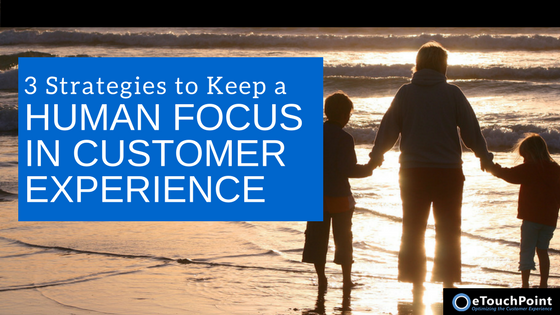
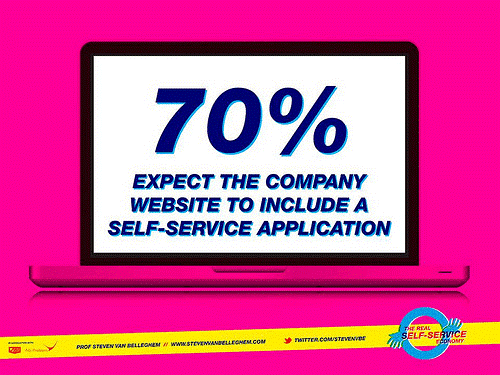
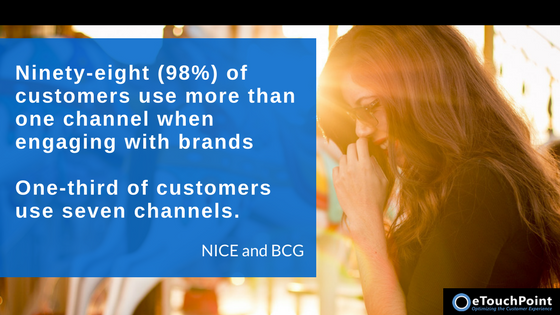
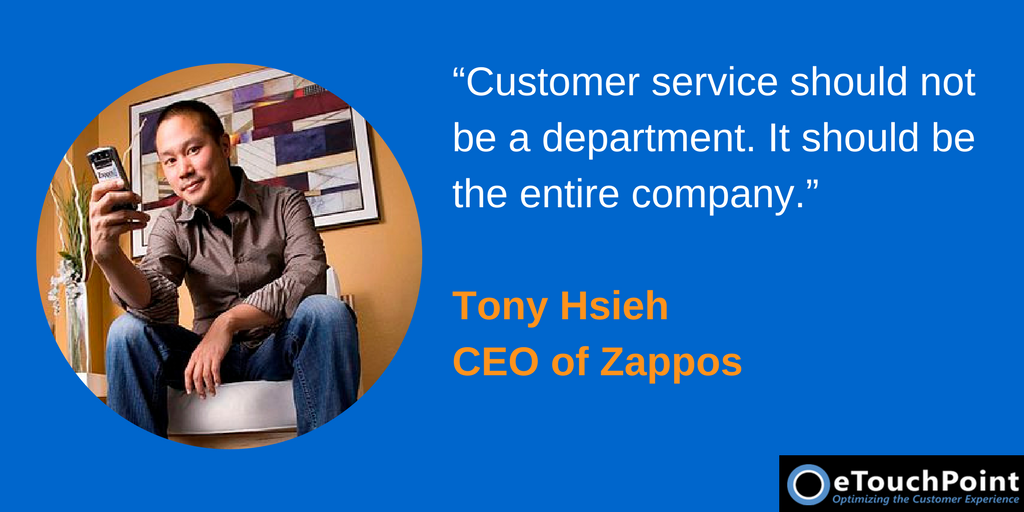
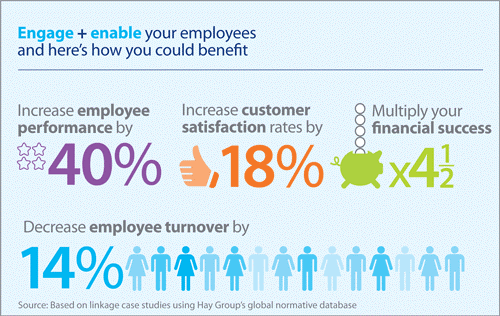



Hi Connie: this is great advice! Though I think of your recommendations more as methods or ideas to consider for strategy rather than strategies themselves. Among the characteristics of strategy are risks and trade-offs, and I think that cultivating knowledge, understanding, and sharing of information are vital for strategy creation and development, no matter what the strategy might be.
Human focus is an interesting term, and I suspect it means different things to different people. To me it means a bundle of actions: providing love, being lovable, being friendly, caring, being sincere and empathetic, being an advocate for someone else’s best interests. This is a partial list, but the point is that these ideas often get subsumed in umbrella terms like ‘human focus.’ After all, it isn’t human focus that businesses are after, but the positive, visceral ways that people feel. I think it’s important to elaborate on what humanness – and its derivations like humanity and humane – really mean, because not doing so runs the risk of having these terms fade into bland marketing buzzwords.